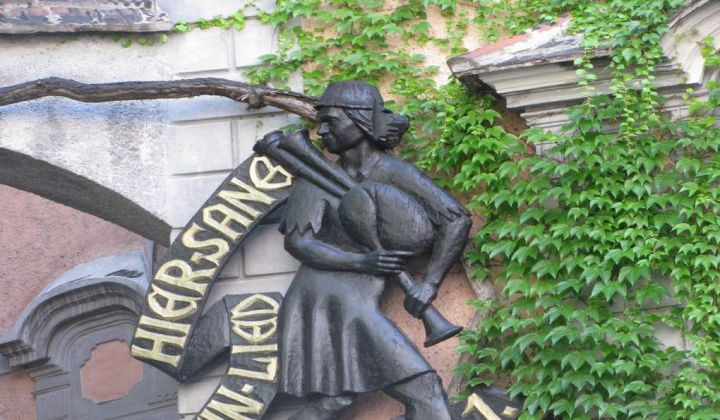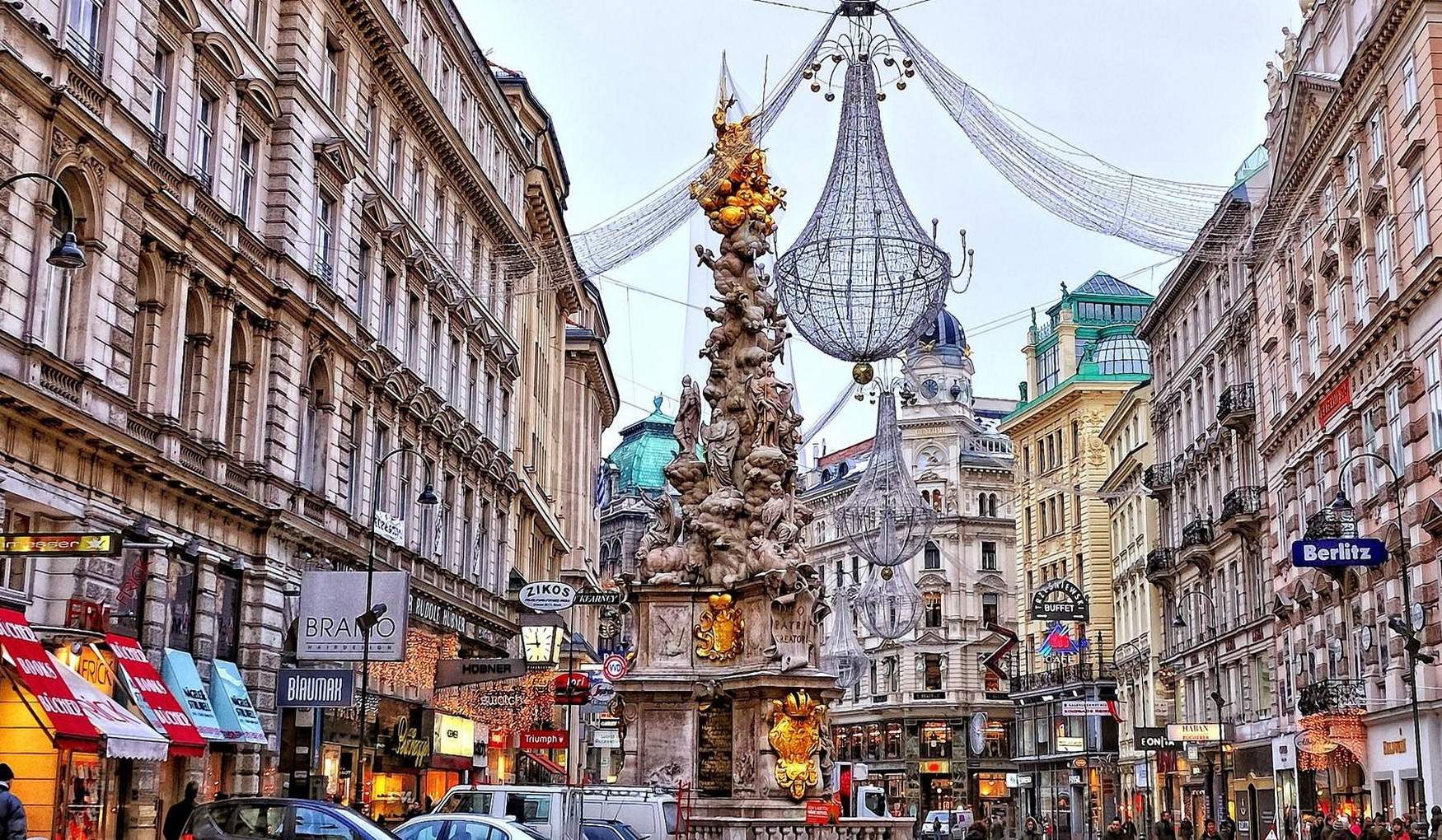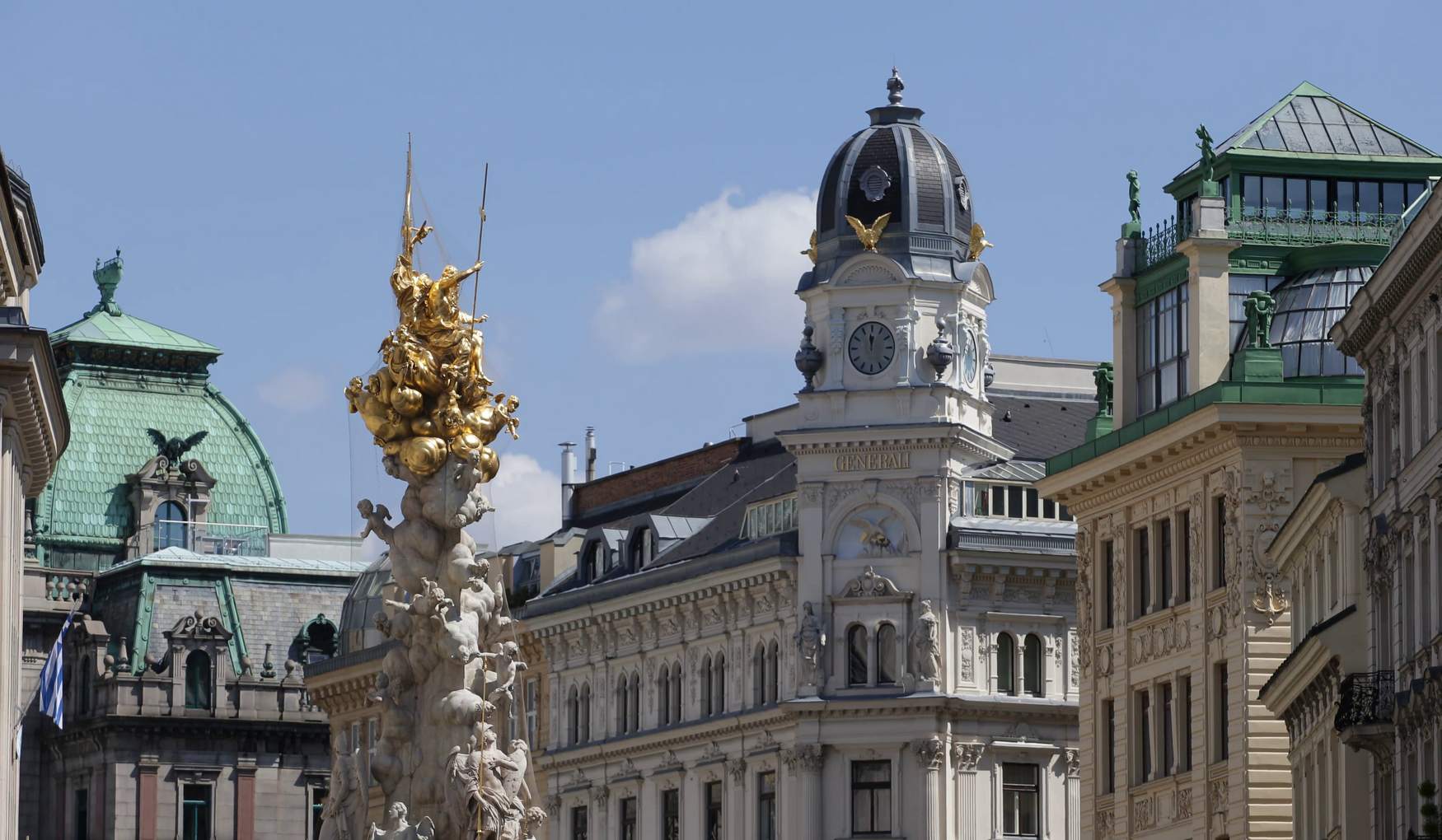All tours in Vienna start in the Old Town. And among its main attractions — the City Hall, the Hofburg, St Stephen's Cathedral — you're bound to spot a white-and-gold marble monument.
From a distance it looks elegant and solemn, but up close it is an image of suffering and mourning. There is no contradiction here: the monument is dedicated to the liberation of Vienna from the plague and to all those who lost their lives to this terrible disease.
The Plague Column in Vienna is described as a unique sculptural ensemble, a true work of art, so it is worth spending some time there. And to understand what is depicted on the monument, we suggest you dig a little deeper into history.

The Great Plague of Vienna: history
In the central squares of many European cities there are similar monuments: columns topped by a statue of the Virgin Mary. Sometimes these monuments commemorate military victories, but more often they commemorate the defeat of the Black Death, as the plague was known. The disease killed people by the thousands and wiped out villages and towns.
A description of the plague is believed to be in the Bible. Several major pandemics are known from other sources. For example, the Justinian Plague of 551-580 killed 100 million people. In the first half of the XIV century, a wave of the disease swept across Asia and Europe.
The next plague epidemic came to Europe in the middle of the XVII century. The terrible symptoms of the disease were already well known; it was also clear that the disease was highly contagious and spread from person to person.
Therefore, when it was known that the plague was present in neighbouring towns, quarantines were imposed and sometimes the plague was avoided. However, quarantine did not stop rats from roaming about — and they were the carriers of the plague. If you take your child to the Time Travel 5D attraction in Vienna, you will see hordes of rats and scary plague doctors.
The Plague Doctor's protective costume gave him a fearsome appearance. A leather or wax cloak covered his entire body, his hands were covered with gloves, and his face was hidden behind a special nasal mask. The "nose" of the mask was filled with strong-smelling herbs to interrupt the stench of the plague.
The arsenal of treatments was modest: plague buboes, or inflamed lymph nodes, were cauterised or cut out; medicines with exotic ingredients were prescribed; bloodletting was used; it was recommended that frogs be placed on the buboes.
More often than not, the plague doctor had to carry a corpse, for the disease spread rapidly, killing in a matter of days or hours. In the 16th century, the prophet Nostradamus also had to wear the mask and cloak of the plague doctor.
The first medical treatise on the Black Death appeared after the epidemic of 1654-55. But the true cause of the disease was not identified until 1894, when the plague bacillus Yersinia pestis was discovered.
A plague vaccine appeared in the early twentieth century, and fifty years later the disease was successfully treated with antibiotics. There have been no plague epidemics since, although the "black death" has not disappeared without a trace.
Vienna Plague Column

It was the middle of the seventeenth century, and once again Europe was gripped by the plague. The epidemic spread to Vienna and people fled the city, but there was nowhere to go - neighbouring towns and villages refused to admit visitors.
Some attempts were made to combat the disease - the physician Paul de Sorbait proposed a series of sanitary measures, and the Holy Trinity Brotherhood opened hospitals for the sick and arranged for the bodies of those infected to be transported out of the city. Emperor Leopold I of the Holy Roman Empire also left Vienna with a promise to erect a monument in honour of the city's deliverance from the plague.
At the time, a wooden column designed by the sculptor Johannes Fruehwirth was already standing in the city. The Corinthian column was surmounted by an image of the Holy Trinity surrounded by nine angels, which the inhabitants hoped would ward off the plague.
The epidemic, which according to various estimates killed between 12 and 75 thousand people in Vienna, ended in 1679. In 1683 Matthias Rauchmiller began work on the marble monument, and after his death other sculptors, including Paul Strudel and Tobias Krucker, continued the work. The architect Fischer von Erlach, whose most famous projects include Schönbrunn Palace, also contributed.
The concept had become more complex: the column was to depict not only the Trinity but also Leopold I, whose prayers had saved Vienna from the plague. The new design was created by Ludovic Burnachini, a famous theatre architect.
The design shows the Emperor on the column as the intercessor of the people before God. The emperor can also be seen among the angels.
Burnaccini was able to combine religious and political themes. Each wing of the monument has a specific symbolism. The western wing symbolises God the Father, with the shield of the Holy Roman Empire, the shields of Styria, Carinthia and Krain (the Austrian lands within the Monarchy) and the double-headed eagle.
The eastern wing is dedicated to the Son of God and bears the shields of Hungary, Croatia, Dalmatia and Bosnia. The northern wing is dedicated to the Holy Spirit and bears the shields of Bohemia, Silesia and Moravia. The inauguration of the Holy Trinity Column took place in 1693. Since then, the monument has undergone several changes. Various sculptors added new elements.
Details of the monument
The column is more interesting to look at if you understand what the different figures symbolise. The easiest part of the monument to interpret is the top, a gold-covered image of the Holy Trinity.

Below, among the clouds, are the figures of nine angels, corresponding to the number of angelic ranks. On the angelic sculptures, some elements are highlighted in gold - the crown, the trumpet and the instruments of Christ's Passion.
Even lower is the figure of the kneeling Emperor Leopold I, wearing a gilded crown and holding the ceremonial imperial sword. His eyes are raised to heaven, as if to ask God to save the people of Vienna from the plague.
And below this sculpture is another expressive group: a woman with a cross in her hands, throwing down an ugly, shriveled old woman. This symbolises Vera throwing down the plague from her pedestal. Next to Vera are bas-reliefs depicting biblical scenes.
But the Plague Column in Vienna has another secret. Among the images is one commemorating the victory over the Ottoman Empire at the Battle of Vienna in 1683. After that, Austria gained unprecedented power and became the most powerful state in Central Europe. The Plague Column in the Austrian capital is therefore also a monument to Leopold I's military victories.
«Dear Augustine»
Surprisingly, there is an amusing story associated with the plague epidemic of 1678-79. A certain Augustine, a street singer and drinker, was so good in a tavern that he couldn't make it home and fell asleep in the street.
He was picked up by the monks who were collecting the bodies of those who had died of the plague and taken to the pit where the corpses were buried. Augustine, who had slept and sobered up in the morning, found himself in a terrible position — and in perfect health.

The musician attributed this happy outcome to a good dose of alcohol and a song he had composed the night before: "Oh dear Augustine, Everything's gone!" The Viennese, hearing the story of the miraculous salvation, took up the song and didn't mind a drink. Fortunately, the Black Death hardly ever came to Vienna again.











